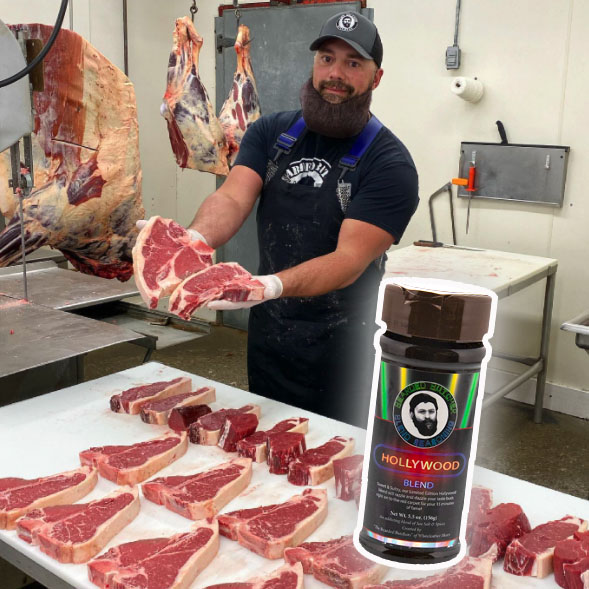My first homebrewing purchase was a book. Before I ever made a drop of beer, I read Charlie Papazian’s book, The Joy of Homebrewing cover to cover. Looking back, I realize that only an infinitesimal amount of that valuable tome actually stuck in my brain that first time through. I’ve read it many times since and something new “clicks” every time—and Charlie’s passionate, encouraging style is a treat. If you’re looking for more book recommendations, I also strongly recommend Randy Mosher’s Radical Brewing and John Palmer’s, How to Brew—both outstanding books no matter how long you’ve been wielding your beer paddle.
But there are some things they don’t tell you in the books that I think could be really, really useful to the beginning homebrewer. Or, to be clear, they might tell you in the book but for some reason they didn’t sink through my thick skull. Here are ten of those pieces of advice.
1. Get the big(ger) kettle.
Like many of my fellow homebrewers, my first significant purchase was a starter equipment kit. Once I had it, all I needed was a kettle and ingredients, and I was good to go. So, I bought a 5-gallon stainless steel kettle for $35. Stupid. It took only 2 weeks of brewing before I dropped another $70 on a 7.5-gallon kettle. If you ever plan to get into all-grain brewing or want to reduce the likelihood that your kettle will boil over, splurge for the big kettle right out of the gate. You’ll be saving money in the long run. Read more about selecting a kettle.
2. Wort chillers are worth it.
One of the best ways to reduce the likelihood of your beer getting contaminated is to chill the wort as fast as possible, dropping the temperature from that dangerous range that evil bacteria just love. Many beginning homebrewers accomplish this by submerging the brew kettle in an ice bath in either a large tub or the bathtub. Depending on how many bags of ice you purchased (additional expense), this can take anywhere from 40 minutes to well over an hour.
You can save a ton of time, eliminate hassle, and reduce the risk of contamination by purchasing a wort chiller. These come in many shapes and sizes, but the most common is a coiled immersion chiller. Immersion chillers usually cost $50-$70 and can typically chill 5 gallons of wort in 20 minutes or less. You simply hook a cold-water source up to the immersion chiller, add the chiller to your kettle for the last 10 minutes of your boil to sanitize it, and then turn on the water after you’ve removed your kettle from the heat source. The chiller does the rest, and is surprisingly easy to clean when you’re finished chilling your wort. (Plate chillers are also available but are a little more complicated to use and cost considerably more.) Read more about chilling your wort.
3. Get the big(ger) auto-siphon.
Whether you are transferring from the kettle to the primary fermenter or racking to the keg, the auto-siphon is your primary tool. Most beginning brewing setups include a 5/16” auto-siphon. These usually cost about $10 when purchased on their own, but for just $4 more, you can get a ½” racking cane that will save you a ton of time getting that precious liquid moved from vessel to vessel. It wasn’t until my fortieth batch of homebrew that I moved to the larger size—something I wish I had done on batch one.
4. Create your own yeast starter.
When I ask experienced homebrewers for the top things they’ve done to make their beer better, one of the most commom answers I hear is, “I now pay close attention to the yeast and always make a strong starter.”
Whether you buy a tube of yeast, a smack pack, or a package of dry yeast, creating a yeast starter is a phenomenal way to make sure that your fermentation cycle gets off to a great start. It takes only about 20 minutes to do and dramatically improves your chances of getting a strong, active primary fermentation phase. This also reduces your chances for contamination since the conversion of sugars to alcohol happens more rapidly when the yeast are healthy and plentiful. Get tips on creating your own starter.
5. Oxygenate your wort.
After your hot phase is complete and your wort is chilled, there’s relatively little oxygen left, and yeast likes oxygen to get a vigorous fermentation started. There are a couple ways to add oxygen to your wort. You can add water from the tap, but this dilutes your wort, reducing your ABV and overall flavor of your beer. My preferred method is to use either an aeration stone (just like those you may have seen in an aquarium) or an oxygenation kit. These will run you anywhere from $35 for the aeration stone to $50 for the oxygenation kit (without the oxygen tank). Trust me, your beer will thank you. See more about oxygenating your wort.
6. Buy carboy handles.
Carboy handles seemed like unnecessary accessories to me when I first started brewing, but since then, I’ve bought them for almost all my carboys. Especially if you are using larger glass carboys, these handles are super handy. Just the ability to pick up a carboy from the top and move it a few feet in your cellar is worth the $6 it costs for one.
7. Use a blow-off tube.
Before I ever started brewing, I read a ton of literature that talked about using blow-off tubes instead of air locks for larger beers. I should have paid attention. Whether I was using a 6.5-gallon bucket or a 6.5-gallon carboy, my bigger beers were overwhelming the airlocks almost every single time. Using a blow-off tube in place of an airlock doesn’t mean your beer won’t go bonzo; it just means that you won’t have a mess on your hands. Put one end of a tube into the top of the bung with the other tube submerged in Star San (sanitizer) and you’re set. Some krausen might work its way through the tube into your bucket of solution, so checking on this a couple of times a day and replacing the Star San isn’t a bad idea.
8. Do a mummy bag mash.
Taking the plunge on a mash tun can seem like a pretty big investment when you’re just getting started, and some homebrewers think they can’t start brewing all-grain beers without one. Wrong! If you have a high-quality sleeping bag, simply do your mash in your brew kettle (heat off!) and then wrap it well in a sleeping bag for 60 minutes. You’ll be surprised at how well the temperature holds. Check it after about 15 minutes and add boiling water if you need to bring the temperature up a little.
9. Bottle on the dishwasher.
Bottling your homebrew takes time. From sanitizing the bottles all the way down to cleaning out the fermenter at the end, it can feel like a bottling session lasts as long as a brew session, especially if you’ve had an unfortunate spill or two. (I once let almost 5 gallons of sanitizer drain all over my kitchen floor because I didn’t realize one end of the siphon had silently slipped out of the bucket). This little trick can help save you a lot of mess: Bottle on the open lid of your dishwasher. Put your bottling bucket on top of the counter immediately above your dishwasher and fill your bottles on the open lid. Any spillage simply gets channeled into the dishwasher when you close the door—one less mess to clean up.
10. Foil stovetop boil-overs.
If you’ve ever done your boil on your stovetop and had a boil-over, you know what an absolute nightmare cleaning up that mess is. While stopping boil-overs altogether would be nice, it’s pretty unlikely. Instead, take 2 minutes of prep time to save yourself an hour of elbow pain later. Simply remove your burners from the stovetop and place a layer of aluminum foil all over your stove, letting your burners poke through the foil. If your kettle happens to boil over, simply remove the burners, collect and dispose of the foil, and voila! Clean stove top! And you brewers who have propane burners and brew in your driveway, patio, or garage? This foil thing can work for you, too, preventing stains as well as unhappy spouses.
We hope you find these tips from a staff homebrewer useful. Please comment below to add your own tips to help your fellow brewers.
For more great homebrewing advice, recipes, and more, subscribe to Craft Beer & Brewing Magazine™!


